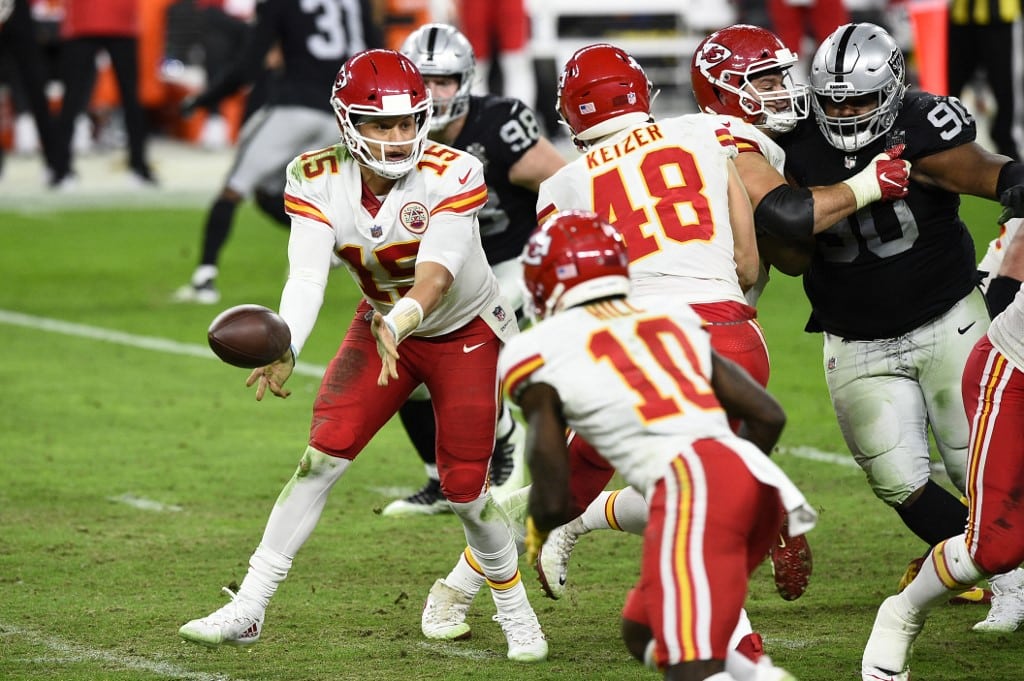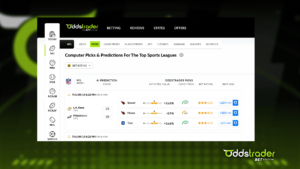Gone are the days when sports bettors were content to bet a side or a total. Now we have proposition wagers, futures, and a vast betting menu that used to only be available on special events like the Super Bowl.
And more to the point, bookmakers like Bet365 (check our Bet365 Review) and Caesars Sportsbook (check our Caesars Sportsbook Review) are now offering exotic wagers that can be made, which include reverse bets.
And while they are not new, more and more punters are incorporating them into their sports betting routine.
Let’s explore reverse bets and see if they are right for you!
If Bets Explained
An action reverse, or reverse bet, is simply a series of “if bets”. If something good happens in one wager it triggers the next wager. The reverse is true as well, which is why it is called a reverse bet.
Let’s use a real-life example from Week 11 of the 2021 NFL season when we had the following two games of hypothetical interest:
- Detroit Lions vs. Cleveland Browns -14
- Arizona Cardinals vs. Seattle Seahawks -5
In this scenario, we will side with the underdogs but want to limit our risk and exposure by combining two “if bets” on these games instead of two flat bets which would cost us more money if both bets lose. If the goal is to win a total of $200 let’s look at the flat bet compared to the reverse bet.
Flat Bet Scenarios
Scenario 1: Both Bets Win
- Detroit +14 covers the spread: +$100
- Arizona +5 covers the spread: +$100
Result: +$200
Scenario 2: Bets Split
- Detroit +14 covers the spread: +$100
- Arizona +5 fails to cover the spread: -$110
Result: -$10
Scenario 3: Both Bets Lose
- Detroit +14 fails to cover the spread: -$110
- Arizona +5 fails to cover the spread: -$110
Result: -$220
Reverse Bet Scenarios
Scenario 1: Both Bets Win
- Detroit +14 covers the spread: +$50 which triggers Arizona +5 covers the spread: +$50
- Arizona +5 covers the spread: +$50 which triggers Detroit +14 covers the spread: +$50
Result: +$200
Scenario 2: Bets Split
- Detroit +14 covers the spread: +$50 which triggers Arizona +5 fails to cover the spread: -$55
- Arizona +5 fails to cover the spread: -$55 which DOES NOT trigger Detroit +14 covers the spread: NO BET
Result: -$60
Scenario 3: Both Bets Lose
- Detroit +14 fails to cover the spread: -$55 which DOES NOT trigger Arizona +5 fails to cover the spread: NO BET
- Arizona +5 fails to cover the spread: -$55 which DOES NOT trigger Detroit +14 fails to cover the spread
Result: -$110
What Did We Learn?
If we compare the two approaches, we can evaluate the three different scenarios.
Scenario 1: Both Bets Win
As we can see the result was +$200 in both the flat bet and reverse bet scenarios. It’s all good from the bettor’s perspective and the only one unhappy is the bookie.
Edge: None
Scenario 2: Bets Split
Here we see that the decided advantage is the flat bet vs. the action reverse bet. In the case of the flat bet, we lost only the vig of $10 compared to the $60 we lost in the reverse bet scenario.
Edge: Flat Bet
Scenario 3: Both Bets Lose
And this is the reason why some prefer the reverse bet as it limits your losses if the worst happens and all your bets go south.
We can see that if both $100 flat bets lost it would be a total of -$220 lost (-$110 + -$110) but if both reverse bets lost it would be a loss of only $60 which is approximately 73 percent less than we would have lost had we bet both teams flat.
Edge: Reverse Bet








